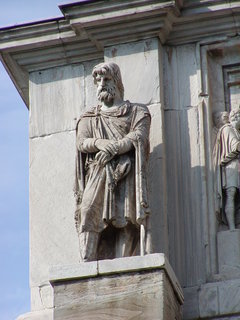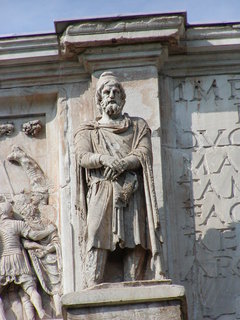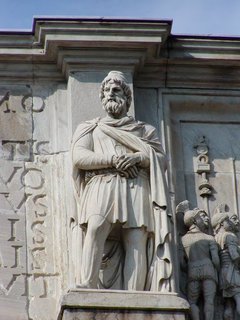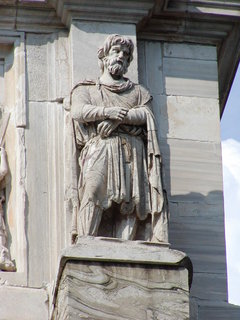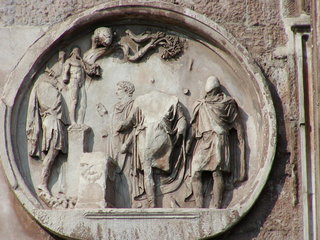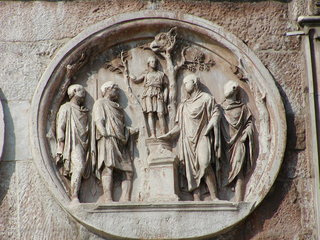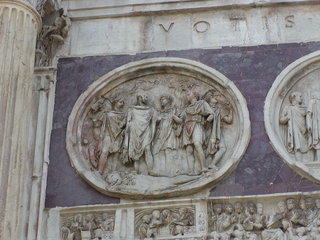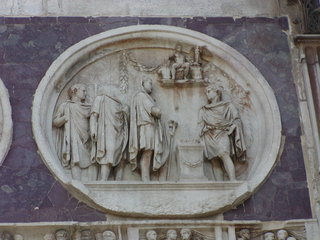 |
 |
 |
 |
 |
 |
||||||||||||||||||||||
| Trajanic Statues and Reliefs: The oldest decorative parts of the arch of Constantine are from the time of Trajan. The eight statues of pavonazzetto marble depicting Dacain prisoners, placed above the Corinthian columns have, more likely then not, been taken from the Forum of Trajan since similar statues have been found in that area. Also there are large reliefs from the time of Trajan on the upper part of the ends of the arch, and the two relifes on the inner walls of the central archway. All the reliefs measure 3mx20m and seem to all be part of a larger series. Probably part of the frieze of the Basilica Ulpia in the Forum of Trajan. |
|
||||
| Hadrianic Roundels: A series of eight roundels
are located in pairs above the lateral archways. They have been
dated to Hadrian’s
reign on stylistic reasons. Also images of Hadrian
and Antinous have been identified in them. All the roundels
measure 2mx2m. The scenes on the roundels
are all related to hunting or sacrifice. Probably to be interpreted
as metaphors for the military and religious roles of the emperor. |
|
||||
|
Marcus Aurelius: Located above each of the lateral archways and on each side of the central inscription are eight panels mounted in pairs. They either from the time of Marcus Aurelius or his son Commodus. The province where the reliefs were originally located is unknown. They likely came from one of two, now lost, triumphal arches erected by Commodus in honor of his deified father Marcus Aurelius. They depict wars against the invading Germanic tribes known as the Marconanni and the Quadi.
|
|
||||
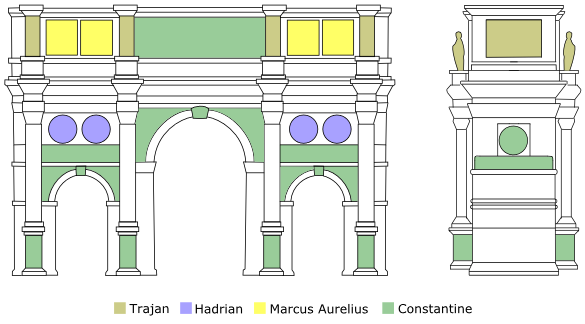 |
